Ready to Read
With the help of the publisher, Shelf Awareness explores Ready-to-Read, including the soon-to-be-launched Ready-to-Go! books, especially designed for beginning readers.
With the help of the publisher, Shelf Awareness explores Ready-to-Read, including the soon-to-be-launched Ready-to-Go! books, especially designed for beginning readers.
"You don't just hand a book to a child and say, 'Okay, buddy, it's time to read.' You plant the seed by reading together, by making books available, and by reading yourself and showing your child that reading isn't a chore, it's a wonderfully pleasant pursuit in its own right." --Valerie Garfield, vice-president and publisher, novelty and licensed publishing, Simon & Schuster Children's Publishing
 You may have walked into children's bookstores and seen those slick spinner racks of colorfully illustrated early reader books, categorized by reading level, so promisingly straightforward. The trouble is, most publishers' early reading programs have different coding systems... so all Level 1 books are not created equal. A 3 could be a 4 or even a B. This "leveling" can be bewildering, and adults worry about making a mistake that will put a child off reading forever, whether their choice is too easy or too challenging. "I understand the hesitation people feel about choosing a 'just right' book for their child," says Garfield. "And a child's first reading experience can color his or her perception moving forward, so there's something to it. But it's not always a matter of a perfect level; young readers will toggle between levels until there's comfort in staying at a higher one. And sometimes they need to go back to a lower level for some relief or to build confidence. There's always a balance."
You may have walked into children's bookstores and seen those slick spinner racks of colorfully illustrated early reader books, categorized by reading level, so promisingly straightforward. The trouble is, most publishers' early reading programs have different coding systems... so all Level 1 books are not created equal. A 3 could be a 4 or even a B. This "leveling" can be bewildering, and adults worry about making a mistake that will put a child off reading forever, whether their choice is too easy or too challenging. "I understand the hesitation people feel about choosing a 'just right' book for their child," says Garfield. "And a child's first reading experience can color his or her perception moving forward, so there's something to it. But it's not always a matter of a perfect level; young readers will toggle between levels until there's comfort in staying at a higher one. And sometimes they need to go back to a lower level for some relief or to build confidence. There's always a balance."
Still, finding the right level can be tough. One way that Simon & Schuster's Ready-to-Read line distinguishes itself is that its early reader books are not labeled with specific age designations. The philosophy is that there are no "shoulds"--and certainly no shame--in reading at any level, at any age: "I'm not comfortable with a fixed idea of where someone should be reading at age six," explains Garfield. "We like a more flexible approach, reinforcing that wherever you are, you're a reading star. Ready-to-Reads celebrate the fact that you're reading, period. Attributing stars to all our levels--Rising Star (Pre-Level One), Star Reader (Level One), SuperStar Reader (Level Two) and MegaStar Reader (Level Three)--was intentional. The truth of the matter is that kids learn to read at different times in different ways."
Simon & Schuster's Ready-to-Read books--in hardcover, paperback and e-book formats--are designed to build reader confidence and to entertain, whether through popular branded characters like Daniel Tiger and PJ Masks or stories by award-winning storytellers and artists like Cynthia Rylant (Annie and Snowball; Henry and Mudge; Brownie and Pearl), Marion Dane Bauer (Wonders of America), David Milgrim (The Adventures of Otto), Doreen Cronin and Betsy Lewin (Click, Clack, Moo), Alyssa Satin Capucilli and Henry Cole (Katy Duck), David Carter (Bugs), Jon Scieszka and David Shannon (Trucktown), James Howe and Melissa Sweet (Pinky & Rex) and Eric Carle (The Tiny Seed, among others).
High-interest, energetically illustrated nonfiction series about topics from the history of pizza to the science of super powers provide an underlying educational hook to the program. "Each year Simon Spotlight, the imprint under which all Ready-to-Reads fall, introduces a new series to the line, from Science of Fun Stuff to the geography/world culture series Living In... to the upcoming Secrets of American History," explains Siobhan Ciminera, editorial director of Spotlight. "We are always exploring ways to expand the program so that our books span a wide array of interests," she adds. "But the glue that holds everything together is that all the books are fun to read."
In 2017, Simon & Schuster is launching a new Ready-to-Go! level for children who may need a stepping stone to Ready-to-Read's Pre-Level One stories. "It's important to us to make the beginning reading experience as exciting as possible," says Garfield. "And to that end we are cognizant that some children will take a flying leap and some will need a more gentle path to reading independently."
"The underlying motivation behind our 'Star System,' behind taking the ages off the books, and really behind the line in general, is to be the cheerleader of the beginning reader," says Garfield. "We want to applaud first steps in reading and we want to encourage children to read more. We know that when a confident reader leaves the beginning reader section we've done our job well, and we're sending a reader off into the rewarding world of books, hopefully for life." For extra cheerleading help, downloadable certificates and e-cards to print, post or send blossoming young readers are available on the Ready-to-Read website (readytoread.com).
As Julie Andrews sang, "Let's start at the very beginning, a very good place to start." In May 2017, Simon & Schuster will launch a new Ready-to-Read level for children who are just starting to read, aptly named Ready-to-Go! The books, each with a cover burst that says "New Readers Start Here," will be shelved in bookstores and libraries alongside the other Ready-to-Read levels, and the various series debuts will feature popular animated characters from Batman to Daniel Tiger. Valerie Garfield anticipates that Simon & Schuster will be publishing at least six titles in the Ready-to-Go! program per year.
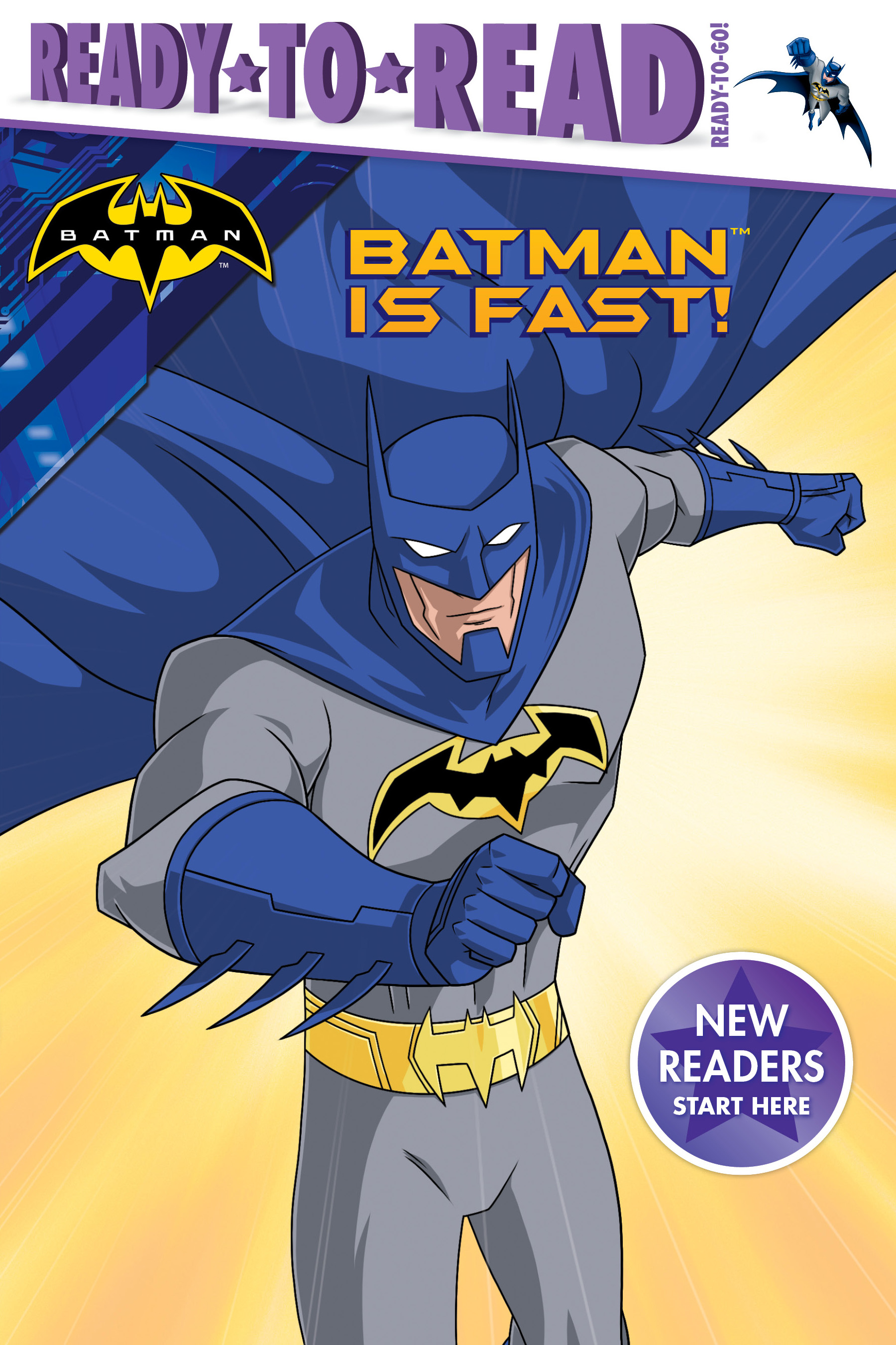 |
 |
"Ready-to-Go! came about from our sneaking suspicion that there was an audience of kids who needed a bit more of a ramp-up into the beginning reader world," says Garfield. The Ready-to-Go! line is designed specifically to prepare readers for the more traditional stories seen in the Pre-Level One books, providing a seamless transition for children who are ready to start reading.
Each 32-page book (available in hardcover, paperback and e-book formats) has only 100 words, and many of them are repeated. Every one of those words is either a frequently used "sight word" from the standard Dolch or Fry lists (such as "me" and "the" and other common words children learn by sight); a rhyming word from a featured word family (such as "land" and "sand," for easy-to-identify spelling patterns); or a well-loved character name, initially paired with a small image. "To further build reader confidence, the Ready-to-Go! books repeat many sentences of the same structure with only one word changed, such as 'We play in the sand. We play in a band,' " says Siobhan Ciminera. An introductory page encourages children to sound out words and get familiar with them; in the back, reading comprehension questions prompt kids to interact with the story again and think critically about it. "These prompts also help parents," says Ciminera.
"Engaging a beginning reader can be tough," Garfield says. "I know, I have one right now, and giving parents some prompts is an easy--and I think helpful--way to engage them in the process. Many parents think they just hand a child a book and off they go, but it doesn't work like that." She adds, "Parents can and should be reading along with their children in the very early stages. Kids may need nudging or even a 'way to go!' to encourage them to keep going."
Back to Julie Andrews: "When you read, you begin with A B C," but then? Dive straight into the Ready-to-Go! books. They'll be right there with the Ready-to-Reads.
Valerie Garfield is a vice-president and the publisher of novelty & licensed publishing in the children's books division of Simon & Schuster. There she oversees the Little Simon and Simon Spotlight imprints, which focus on media tie-ins; the Ready-to-Read beginning reader line; and preschool publishing. She has held positions at HarperCollins, Golden Books and Sesame Workshop, where she was director of publishing before arriving at Simon & Schuster. She also writes for the Simon & Schuster blog as BookMom, helping parents encourage reading.
 |
|
| Valerie Garfield | |
How did you land in your position at Simon & Schuster as champion of beginning readers?
I actually started my career as an editorial assistant working on the I Can Read line at HarperCollins. I was lucky enough to help with some wonderful books there, and later at Golden Books when I was on a team launching the Road to Reading line. When I was in licensed publishing at Sesame Workshop, and then again at Simon & Schuster, beginning readers were always a format I helped develop, so I've pretty consistently worked on them for the past 20 years. There's a certain discipline in editing beginning readers, and I think that template has really shaped how I edit books. It's a spare form, and you really have to think about each word.
I have both a soft spot and a fondness for these books because it's magic seeing a child read for the first time. That's the spark that lights a lifetime of reading, and helping create the books that lay the foundation for that is incredibly rewarding.
Do you remember when you first learned to read?
I was an early reader. (Shocker.) My mother, who was a first-grade teacher, taught me how to read using her old Dick and Jane books. The first thing I actually read was a STOP sign. We were in the car and my mother got so excited she almost rear-ended the car in front of us. And honestly that's what I remember most--how excited she was about me reading even if it was just one word. That kind of enthusiasm is contagious for a child.
Tell us more about why the Ready-to-Read team decided not to put age designations on your books.
First of all, you could argue some of those age ranges--like ages 3 to 7--are a little crazy; there is a phenomenal difference between a 3-year-old and a 7-year-old in terms of reading levels and expectations. But mostly we were keenly aware that we didn't want to turn off any kids who may not be reading at level. I've done a lot of tutoring and working in schools with kids who struggle. There is nothing worse than seeing children flip over a book they want to read and see "ages 4 to 8" when they are 8 or even older. They feel deflated and defeated.
Who determines which books are appropriate for which levels? Do you supply guidelines to your authors? Do you have a fleet of educators involved in the process?
We have a fairly strict process in terms of how we assign levels. It's not just "Hey, Bob, this came in and I think it's a level 2. Do you think so? Okay, good, let's make it a level 2." Nope. Each level is determined by word constraints, page counts, dialogue, subject matter and a number of other factors. Authors are guided to write to the level. And after the manuscript is written, and then again after the manuscript is illustrated, outside educational experts are vetting each book to make sure it conforms to those levels.
The levels are also what we call "scaffolded." That means each level builds on the other. So if you have very simple vocabulary in a level 1, you might then move to more complex sentence structure in a level 2. In a level 3 you'll have more dialogue and a complex narrative. The levels are set so that as the child moves through them they are using the skills they've learned on one level and applying it to the next.
How do illustrations correlate with the reading levels? Do type sizes, line spacing and margins figure in as well?
Illustrations are paramount for beginning readers because that's where they are looking for clues if they are stuck on a word or lost in the story. So the illustrations in beginning readers tend to be literal and portray the exact action on each page. We are fortunate to have a very skilled design team working on Ready-to-Reads, and they take great pains to make sure that the text and art are working together. Everything, from the font size to the line spacing and line breaks is taken into account when we're creating a reader, and different levels have different parameters for each of those.
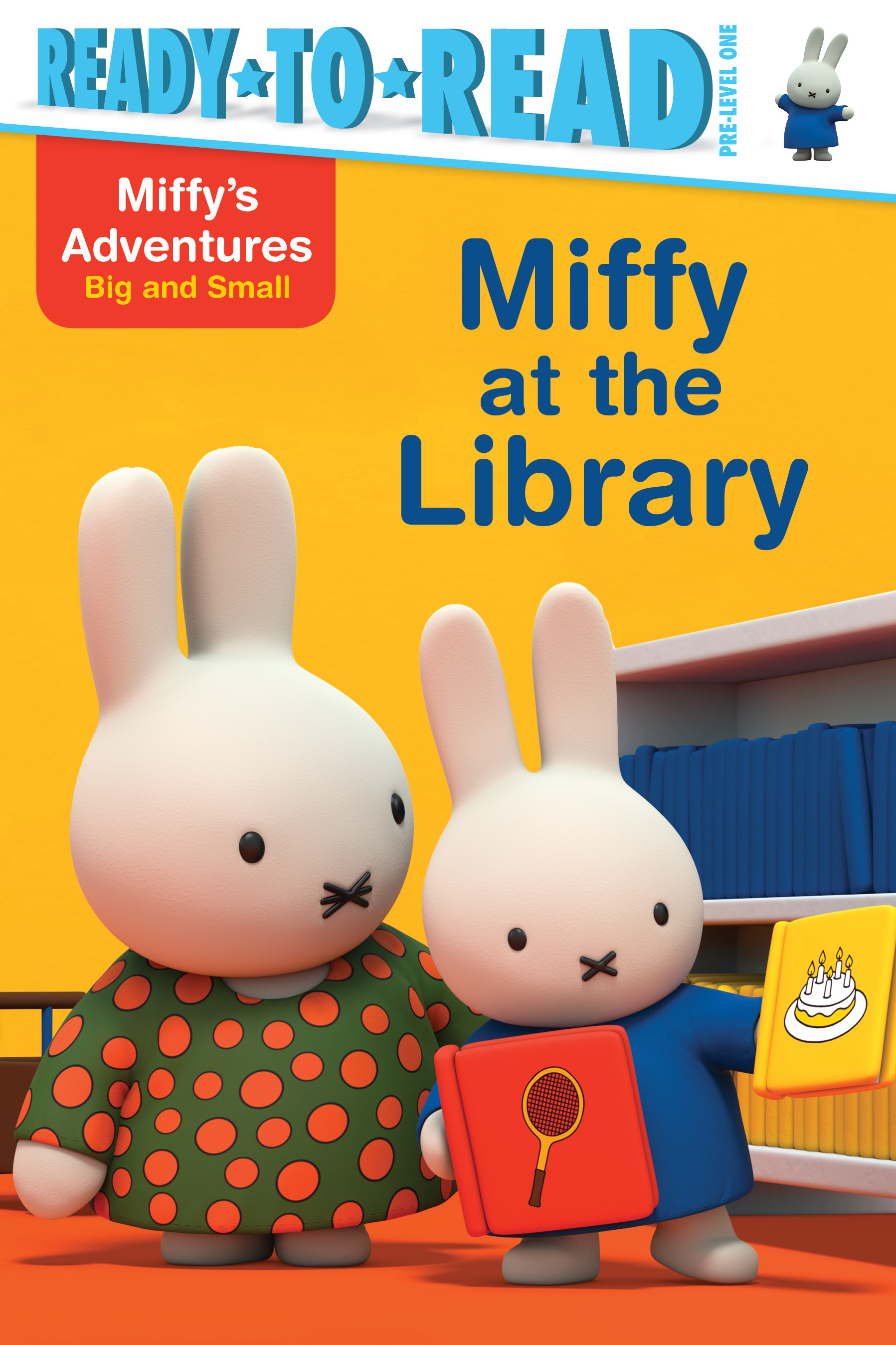
The Ready-to-Read catalogue is full of series starring licensed characters--Peanuts, Batman, Miffy, Kung Fu Panda, the Smurfs.... Tell us what your philosophy is there.
Why not hand readers books that feature their favorite friends? We want to publish books that new readers love. I am fully aware that some take issue with licensed characters in books, but it drives me insane. I've actually had other editors say, "Oh, I don't let my children read those kinds of books." Then they start talking about the latest episode of The Real Housewives. Now I don't want to knock the Housewives, but if there's room in your diet to consume literary classics and popular culture I am unsure why you wouldn't be okay with that for your kids as well.
Are the Ready-to-Reads designed for children to read independently or do you recommend them as read-alouds as well?
I think there's something to be said for parents reading beginning reader books with their children. Often parents see this format as an independent reader, therefore thinking the child should read it independently. To me that's kind of like saying, "Okay, you're old enough to drive, here are the keys." Of course you're going to be in the car with the child, talking him or her through things and possibly even grabbing the wheel a few times. (Or screaming, but I don't recommend screaming when your kids read. Or actually when they drive, either.)
I don't see anything wrong with sitting next to children who are starting to read independently and either helping or prompting them when they get stuck. You are also there to offer encouragement. At first, reading is hard work. Acknowledging that fact--and a little praise--go a long way in encouraging a child to keep going.
How long do children generally stick with the early reader format?
Some kids are in and out of beginner readers in a flash, moving on to more difficult chapter books. Some kids are in beginning readers for quite a while until they master them or gain confidence... or both. The last thing I think beginning readers need is pressure, or to feel badly about how they are reading (or not reading.) And that's really the essence of our line; if you're doing it, you're doing great.
It's always the goal for literacy-focused adults--parents/guardians, teachers, booksellers, librarians and publishers--to help children of any age "find a special book that transforms them from emerging reader to voracious reader," says Valerie Garfield. "With nonfiction, you enable a curious child to independently learn about the subjects that interest him or her the most." For precisely this reason, the Ready-to-Read program offers many nonfiction series, including Wonders of America, ZooBorns... and these.
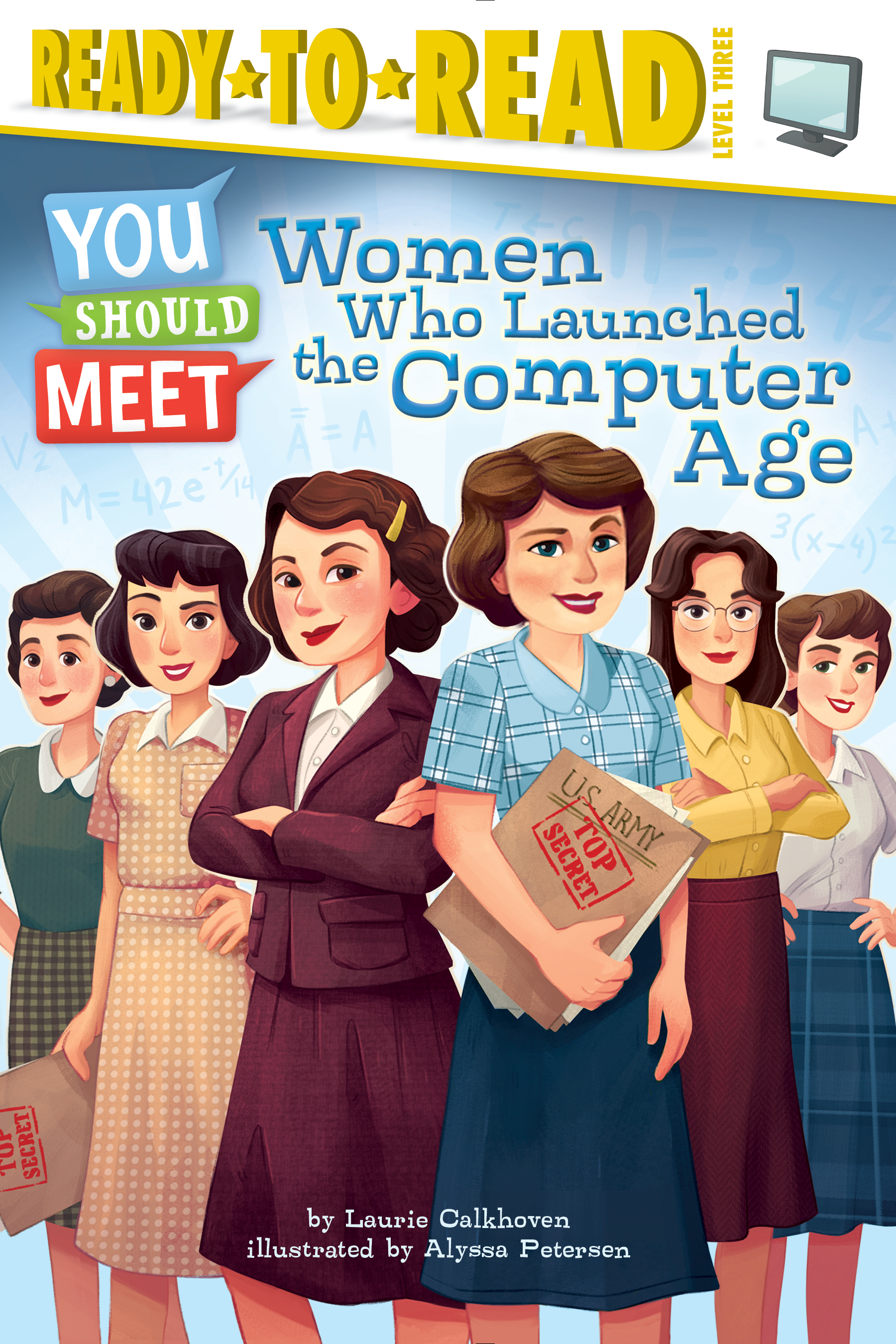
You Should Meet...
The You Should Meet... series of illustrated biographies introduces readers to extraordinary individuals who made and continue to make a real difference. "When you set out to do a biography series, you realize there are so many fascinating people to write about," says Garfield. "How do you choose? We decided to create books about people who greatly influenced kids' lives or culture today, but who may not be known to them. 'You should meet' the ones who changed things, invented things, or introduced things that affect kids today. The line includes a pretty wide range of people, from astronaut Mae Jemison to ballet dancer Misty Copeland to Duke Kahanamoku, who is regarded as the father of modern surfing."
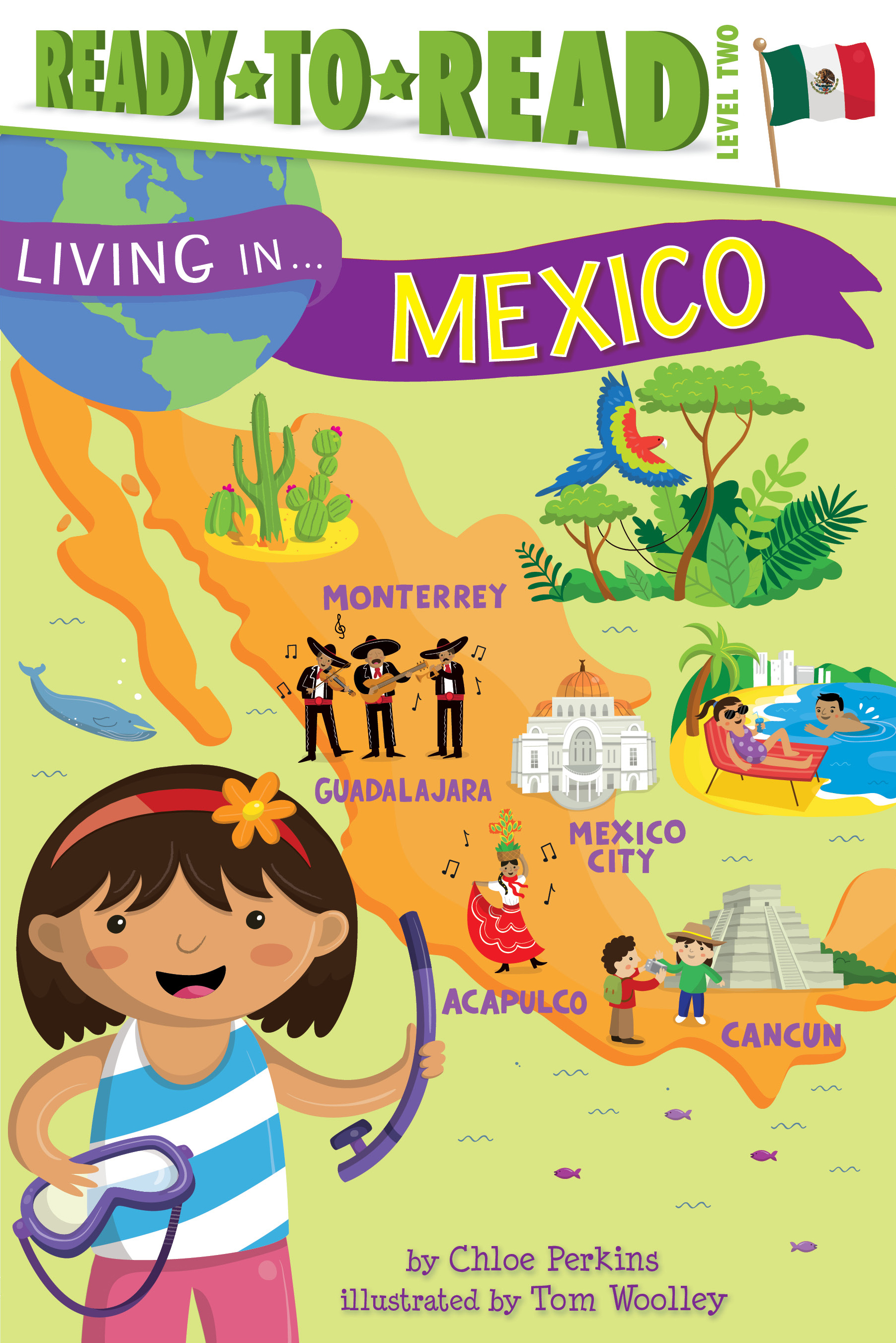
Living In...
"The idea for the Living In... series came from a creative meeting when an editor lugged in a giant, bent, stained book about stories from kids around the world she absolutely loved as a child," says Garfield. "After many discussions we hit on what captivated her about the book, and how we could harness that for a line." To date, the series spans Italy, Brazil, China, Mexico, India and South Africa, with Australia, Egypt, and more on the way. Each title stars an enthusiastic young narrator who guides readers through a child's day in his or her country--school, geography, animals, history, food, culture and holidays, all in 32 pages with a reader-friendly type size and roomy line spacing. The basic structure--including phonetic pronunciations, flag descriptions and a glossary--is mirrored throughout the series, helping build reader confidence. "It's not a new idea to do a geography series," says Garfield. "But this one, with its inviting 'child host,' really speaks to kids who are eager to learn how their days might be different if they lived in a different country."
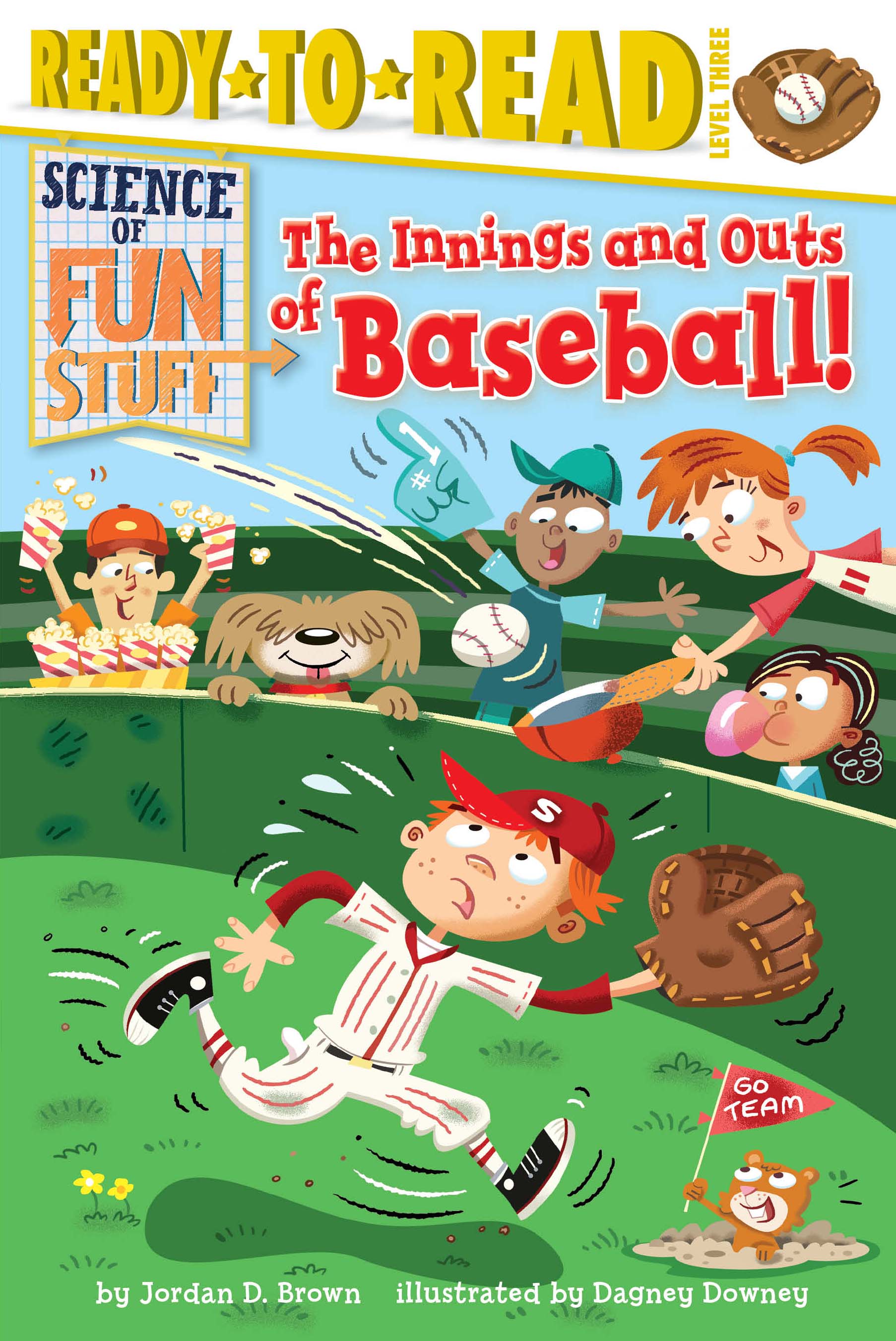
Science of Fun Stuff
What's the science behind amusement-park rides? How about baseball and candy? Airplanes and superpowers? The Science of Fun Stuff series examines the science behind popular obsessions. In Jordan D. Brown and illustrator Dagney Downey's The Innings and Outs of Baseball (Level Three), for example, readers will discover how baseball is "bursting with science." What makes a curveball curve? What is Sir Isaac Newton's First Law of Motion? Bonus sections: Baseball Timeline, Women in Baseball, and the Anatomy of the Arm. "Matching science up with topics kids love, like a roller coaster or a candy bar, makes it that much more enticing," says Garfield.
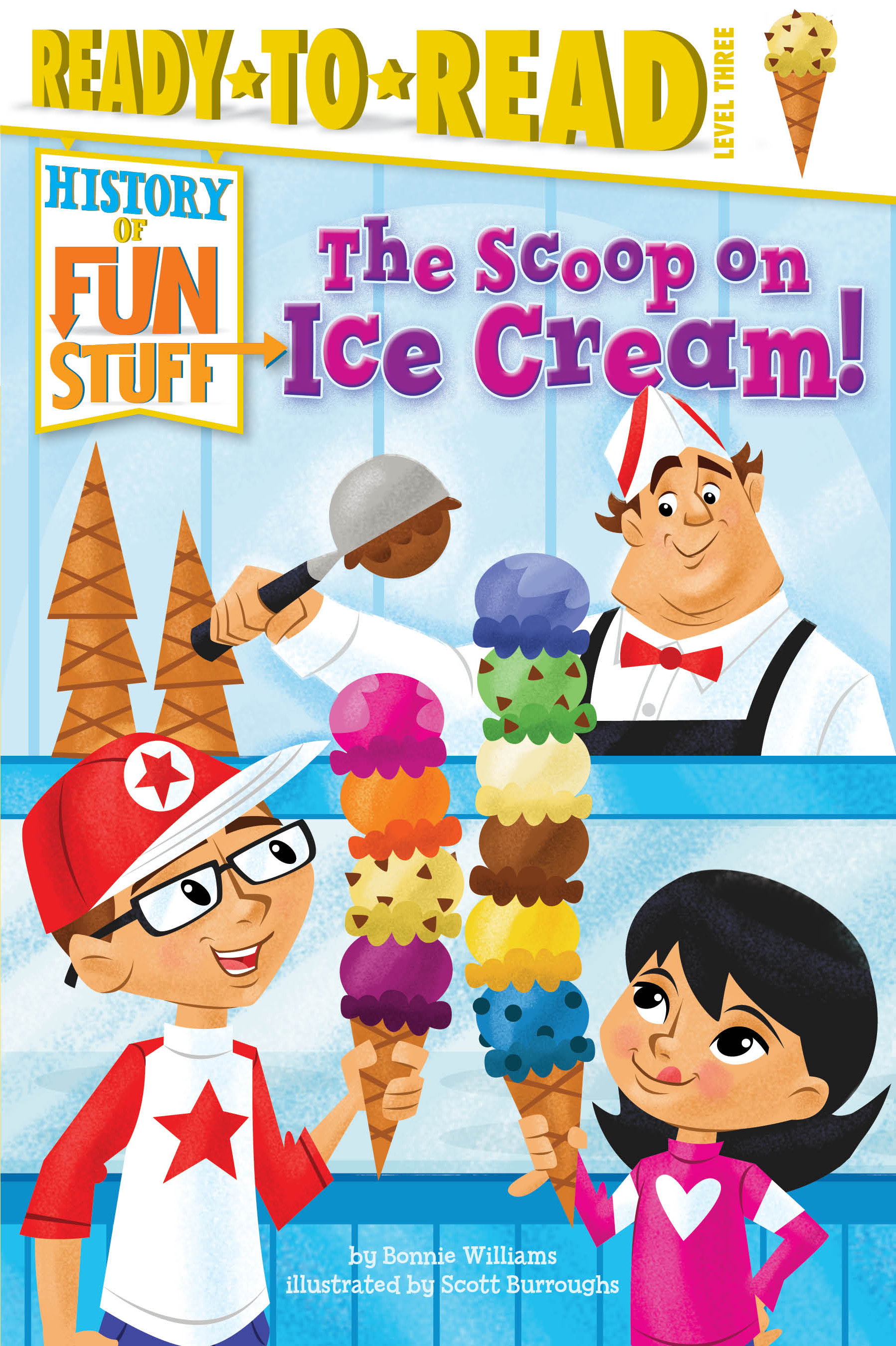
History of Fun Stuff
The history of "fun stuff" like pizza, video games, fireworks and cookies is tackled with gusto in the History of Fun Stuff series. Did pizza originate in Italy? (No.) Did video games really first appear on a "Cathode-Ray Tube Amusement Device"? (Yes.) Was there really a "Society for the Suppression of Unnecessary Noise" to restrict fireworks displays in the United States? (Yes.) Did Girl Scouts used to have to bake their own cookies? (Yes.) History is far from dry and dusty in these engaging early readers with lively illustrations, quizzes and inventive cross-disciplinary asides.
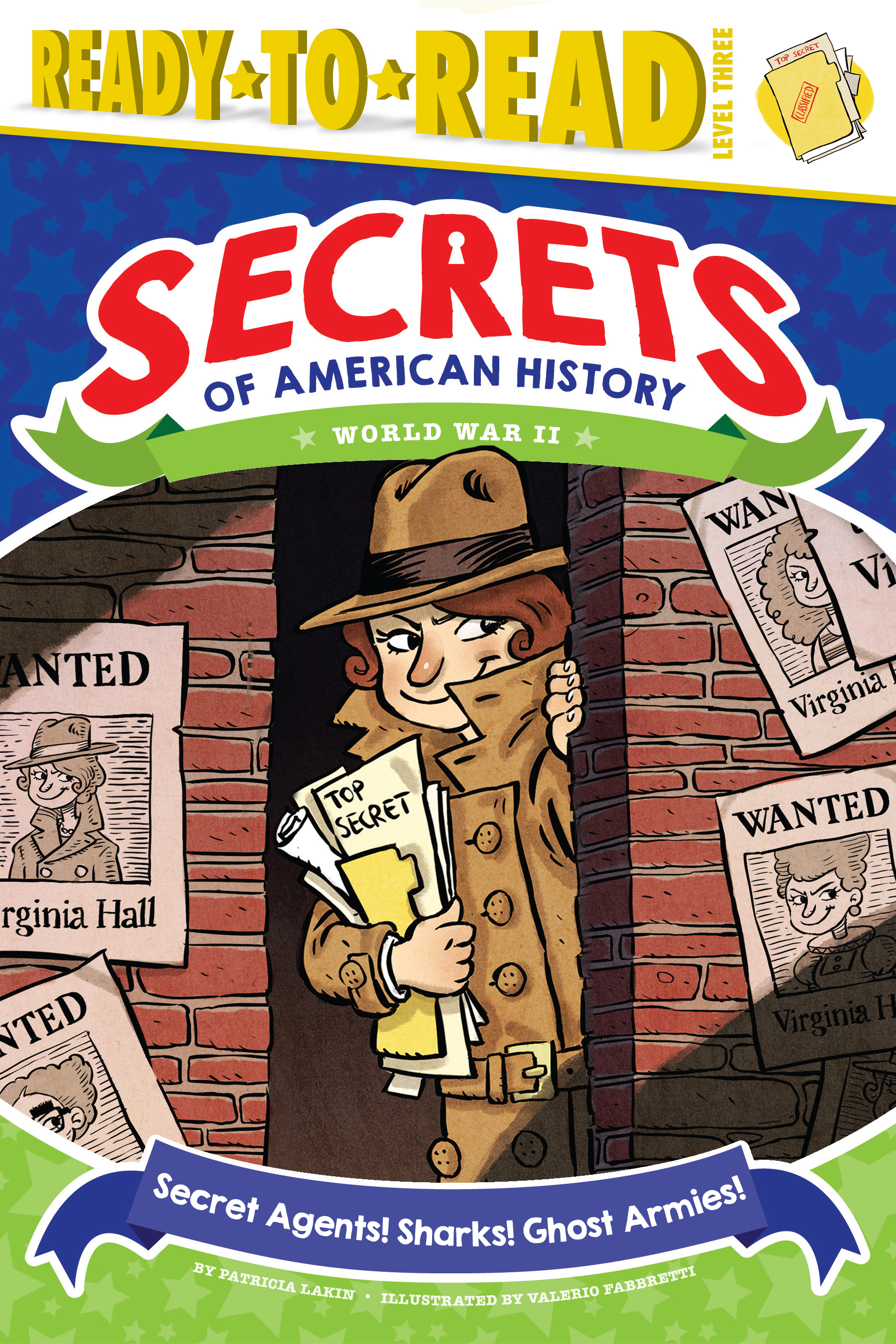
Secrets of American History
Simon & Schuster has a new Ready-to-Read nonfiction series up its sleeve, due to launch in July 2017: Secrets of American History, shining light on "some of the more obscure parts of American history that might be fascinating to kids. Lesser-known things like how Julia Child was involved in the war effort in World War II, or how inflatable tanks were deployed to trick people from a distance into thinking there was an incredible force on the ground," says Ciminera. She adds, "With this series, we let readers in on a little secret: history is really exciting! This summer we'll cover the Revolutionary War and World War II, in the fall we have a Civil War book, and more titles are in the works."
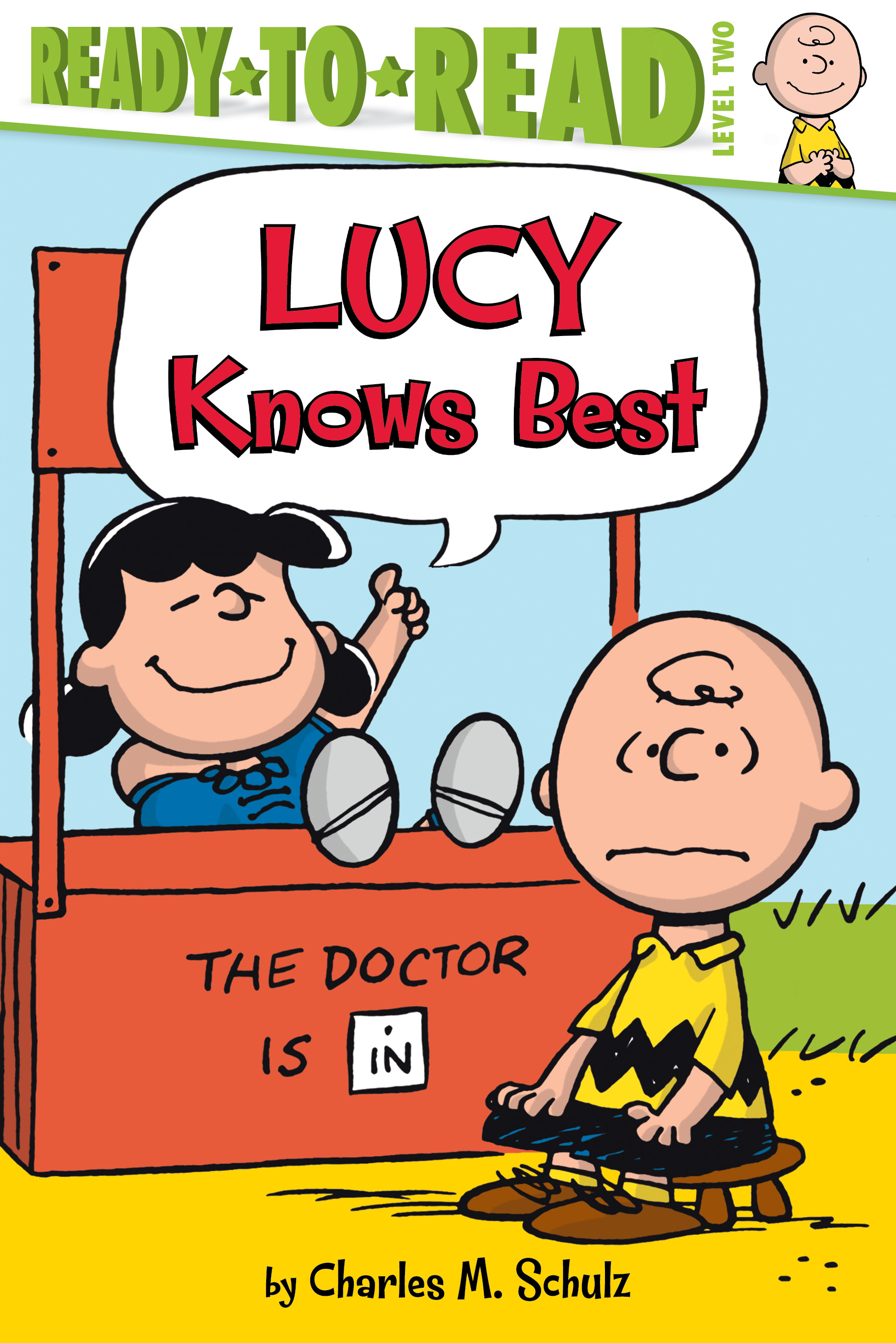 |
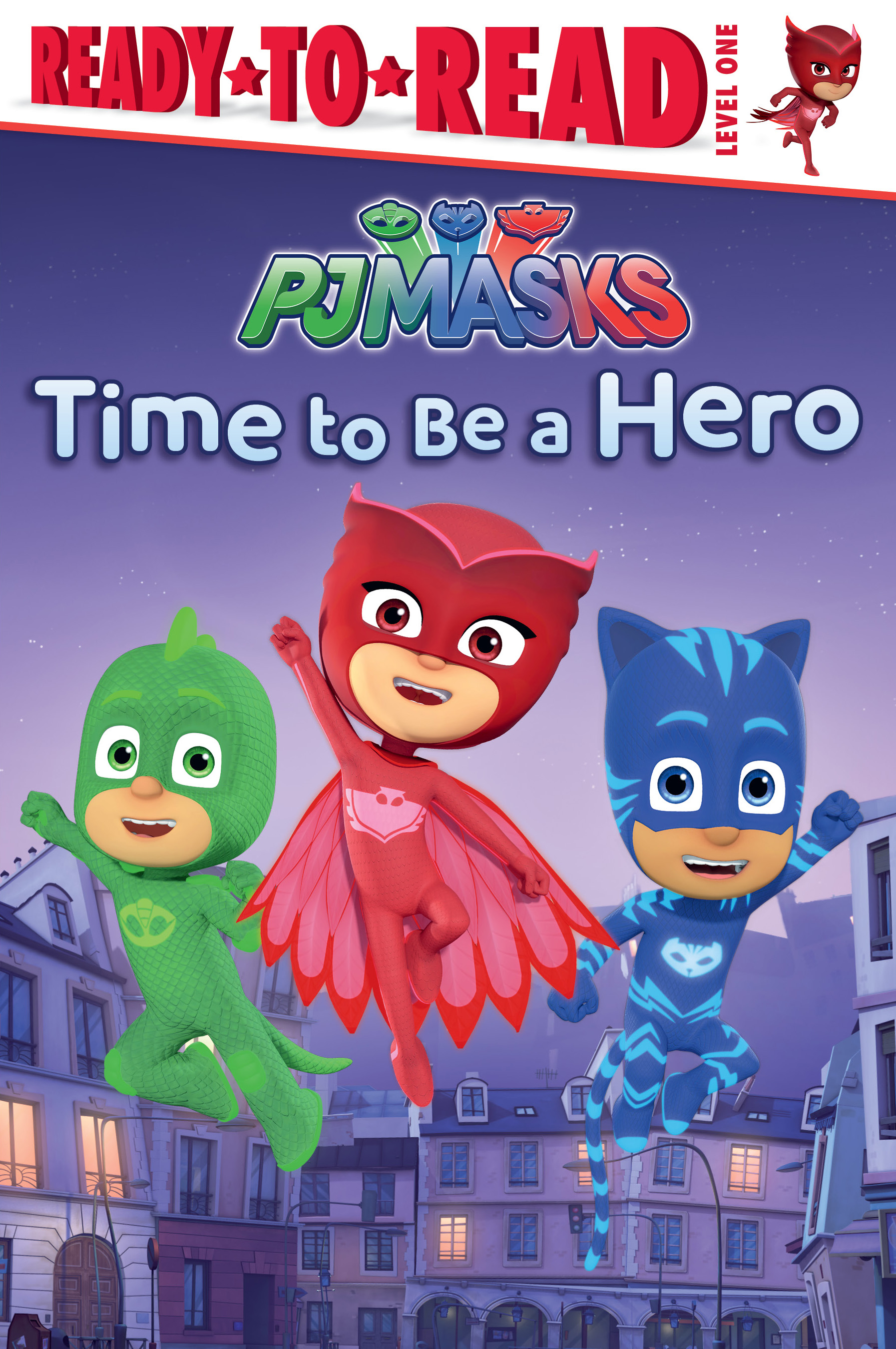 |
"It's our philosophy that if kids are encouraged to read by reading about or along with their favorite characters, that's great," says Siobhan Ciminera. The Ready-to-Read line is rich with licensed characters in all its levels, including Olivia the Pig, Miffy, Daniel Tiger, PJ Masks, the Smurfs, Peanuts and Batman.
Ciminera wholeheartedly embraces the abundance of licensed characters in a line that also includes books written and illustrated by award-winning authors and artists from Cynthia Rylant to Eric Carle. "In my mind they can easily sit together in our line and on a child's shelf," she says. "In everything from our publishing plans to our marketing we don't distinguish between the two and we hold them to the same standards."
She adds, "You may be uncertain if your child will like the book about history or the one about the cute mouse, but you might say, 'Oh, I know he loves Batman. Let's try that one!' "
Header images: PJMasks: © eOne Entertainment, Peanuts: © Peanuts Worldwide LLC, Eric Carle: © Eric Carle, Miffy: © Mercis Media bv, Daniel Tiger © The Fred Rogers Company, Olivia: © Ian Falconer and Classic Media